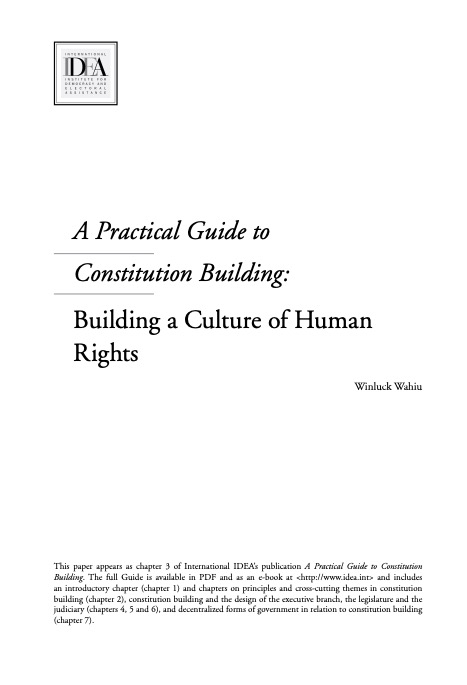
A Practical Guide to Constitution Building: Building a Culture of Human Rights
This paper appears as chapter 3 of International IDEA’s publication A Practical Guide to Constitution Building. This paper focuses on the development of a human rights culture, defined as a culture in which society values human rights to the extent that most, if not all, official decisions aim to maximize these rights. The paper discusses how this culture is shaped by the constitution-building stage, by type of process used to frame the constitution, and the nature or type of the constitution. Next, the paper addresses building a human rights culture in a conflict affected state. Specifically, the paper looks at: (a) the need to deal with past gross violations, (b) the general system of power distribution, (c) legal versus political visions of the constitution, and (d) domestic legal norms versus international human rights law. The paper looks at human rights in democratic states, and then takes a closer look at the human rights options within constitutions. The two issues identified in the report as relevant to constitution building across diverse contexts are: (a) the distinction between citizens’ rights and human rights, and (b) the distinction between basic or fundamental rights and rights in general. Because human rights are only as effective as the mechanisms that enforce them, the paper discusses those matters that most influence the enforcement of human rights norms.
